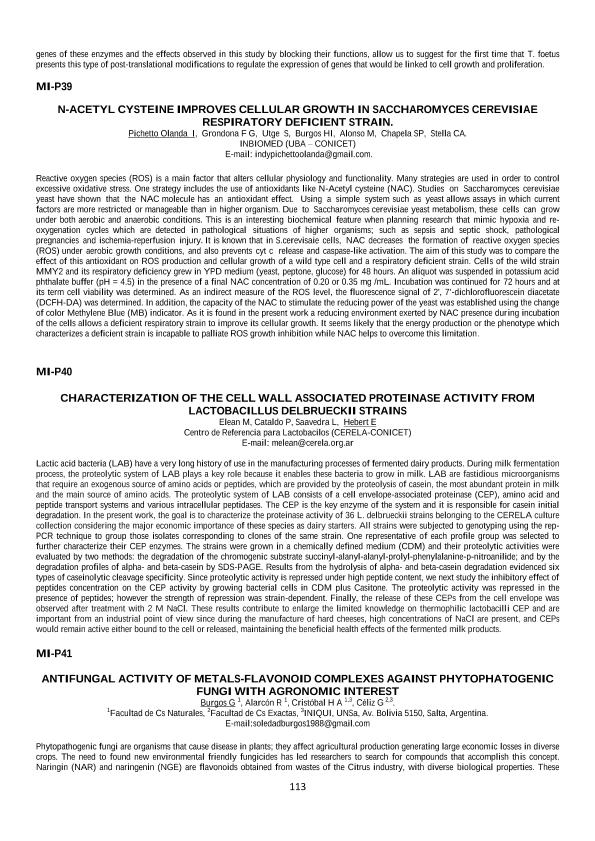Evento
Antifungal activity of metals-flavonoid complexes against fungi with agronomic interest
Tipo del evento:
Congreso
Nombre del evento:
LV Annual SAIB Meeting and XIV PABMB conference
Fecha del evento:
05/11/2019
Institución Organizadora:
Sociedad Argentina de Investigación Bioquímica y Biología Molecular;
Título de la revista:
Biocell
Editorial:
Sociedad Argentina de Investigación Bioquímica y Biología Molecular
ISSN:
1667-5746
Idioma:
Inglés
Clasificación temática:
Resumen
Phytopathogenic fungi are organisms which cause disease in plants; they affect agricultural production generating large economic losses in diverse crops. The need to found new environmental friendly fungicides has led researchers to search for compounds that satisfise this concept. Naringin (NAR) and naringenin (NGE) are flavonoids obtained from wastes of the Citrus industry, with diverse biological properties. These flavonoids have the capability to form complexes with ion transition metals. Currently, the study of the antifungal properties of metal-flavonoid complexes is practically unexplored. In this work, the antifungal activity of some metal-flavonoid complexes was evaluated against three phytopathogenic fungi.This activity was quantitatively evaluated by contact assay using potato dextrose agar as culture medium. In Sclerotium rolfsii, solutions of Cu(II)-NGE (62 mmol/L), Cu(II)-NAR (32 mmol/L), Ni(II)-NAR (32 mmol/L) and Mn(II)-NAR (14 mmol/L) complexes were tested. In addition, flavonoids NGE (124 mmol/L) and NAR (64 mmol/L) were assayed alone. For Rhizoctonia solani and Sclerotinia sclerotiorum, Cu(II)-NAR (32 and 16 mmol/L), NAR (64 and 32 mmol/L) and CuSO4.5H2O (32 and 16 mmol/L) solutions were tested. To prepare this solutions N,N-dimethylformamide/water 10 % (v/v) have been used as solvent. This bioassay was realized using a fully randomized design with five replicates for each treatment.Our results shown that S. rolfsii was higly inhibited by Ni(II)-NAR complex (91 %), followed by Cu(II)-NGE (72 %), Mn(II)-NAR (36 %) and Cu(II)-NAR (3 %), whereas NGE alone caused only 24 % of inhibition and NAR did not present antifungal activity. Solutions of Fe(III)-NAR (40 mmol/L), Co(II)-NAR (24 mmol/L) and Cr(III)-NAR (6 mmol/L) were also tested, but they did not exhibit activity. S. sclerotiorum was not hibited by none of the compounds assayed. For R. solani, only the solution of Cu(II)SO4.5H2O at 32 mmol/L caused significant inhibition (16 %).In conclusion, this study is probably the first reported about the antifundal activity of this kind of compounds, and it demostrate that some of these coordination compounds have potential as new environmental friendly fungicides.
Archivos asociados
Licencia
Identificadores
Colecciones
Eventos(INIQUI)
Eventos de INST.DE INVEST.PARA LA INDUSTRIA QUIMICA (I)
Eventos de INST.DE INVEST.PARA LA INDUSTRIA QUIMICA (I)
Citación
Antifungal activity of metals-flavonoid complexes against fungi with agronomic interest; LV Annual SAIB Meeting and XIV PABMB conference; Salta; Argentina; 2019; 113-114
Compartir




